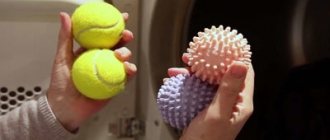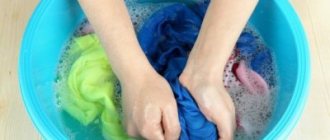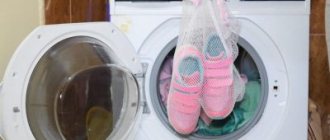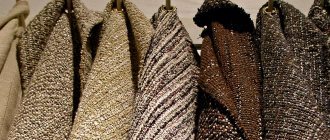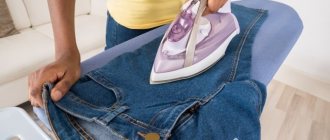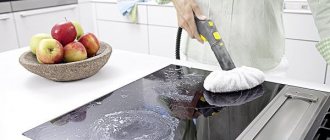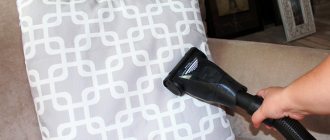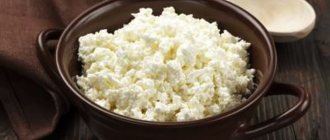Read: 1,586
We judge a person not only by his appearance, but also by the way he speaks. It is speech that provides complete information about a stranger: his education, social status, interests, profession.
That is why it is important to correctly use professional terms in everyday life and know some of the secrets of the culture of Russian speech. Quite often, disputes arise regarding the use of a particular word.
If you do not have a specialized philological education, it is quite difficult to answer this question right away. But it is he who often becomes the subject of controversy. Well, it's time to give a comprehensive explanation.
Read in this article:
- How to say - ironing or ironing?
- Professional vocabulary
- Ironing or ironing?
- When can you use ironing?
Iron or iron – how to use it correctly?
We judge a person not only by his appearance, but also by the way he speaks. It is speech that provides complete information about a stranger: his education, social status, interests, profession.
That is why it is important to correctly use professional terms in everyday life and know some of the secrets of the culture of Russian speech. Quite often, disputes arise regarding the use of a particular word.
If you do not have a specialized philological education, it is quite difficult to answer this question right away. But it is he who often becomes the subject of controversy. Well, it's time to give a comprehensive explanation.
Read in this article:
Features of ironing clothes
Any wardrobe items should be ironed, laid out in one layer - this way the fabric underneath will not wrinkle. It is also important to pay attention to small finishing details - the more carefully you process them, the neater the item will look when worn.
Ironing of outerwear (suits, coats, etc.) is carried out using special armrest boards. If you don’t have this device on your farm, then build a thick cushion from a towel or lint-free blanket.
When ironing a men's or women's shirt, start from the collar, and then move on to:
- cuffs;
- pockets;
- sleeves (arrows on them - bad manners);
- plank;
- coquette;
- back and shelves.
Important: clothes made of fine fabric are first pressed at the seams. This way you will remove wrinkles that appear after washing. To prevent the seams from showing through on the front side, iron strictly from the back.
It is advisable to iron trousers (not jeans) through gauze, but this is done like this:
- First, lay them flat on a board and thoroughly steam the entire surface, paying special attention to the knee area. Regular vinegar diluted with water in a ratio of 1 tbsp will help remove old arrows. per liter Soak gauze in the liquid and use it as usual.
- Next, proceed to processing the belt, cuffs and pockets. Here, use only the sharp tip of the iron, placing the item on the rounded end of the board.
- Finally, restore the hands. Fold the legs so that all seams line up exactly. Place your pants sideways. Cover with gauze and, applying force, form a fold.
How to iron a jacket
Before you start, find out what kind of material was used for sewing. Your further actions depend on this.
For example, bologna, no matter how much it is worn, almost does not wrinkle. But when stored folded (that is, not on hangers), unsightly and difficult to remove wrinkles often form.
The caveat is that the iron must be used very carefully here, because the device can easily melt synthetic fibers. Therefore, before ironing, be sure to look at the product label. If there is no symbol on it that directly prohibits the procedure, then set the iron to minimum heat and test its effect on an inconspicuous part of the clothing.
Thin jackets should be processed from the inside out, protected with bologna gauze. Do not press the device with force and try to move it quickly.
It is safer to level the said synthetic material with steam. Proceed like this:
- Hang your jacket on hangers. Close the zipper and pockets.
- Turn on the generator.
- When it warms up, start moving the nozzle from bottom to top, in close proximity to the fabric, but without touching it. With your free hand, pull the item, holding it by the floor.
It is possible to carry out steam treatment even if the mentioned device is not on the farm. Simply place the jacket over the bathtub. Plug the drain hole and start filling with hot water. Next, close the curtain and leave the product for a quarter of an hour. During this time, moisture will be absorbed into the material and straighten it.
Polyester is another synthetic fabric often used for outerwear. They treat it the same way as bologna.
Important: when it comes to a winter jacket, where padding polyester is used as insulation, the iron will be ineffective. It’s easier to level it at home with a steam generator.
Are we ironing or ironing?
In the Russian language there is a concept of variability of language norms. This means that we can express the same concept in different words, differing only in stylistic shades. This does not interfere with understanding each other at all. For example, such options include the pairs “bard - poet” or “ice - ice”. But as for the words iron or iron - how to use them correctly?
The first thing you need to do to find out the correct use of this pair in speech is to turn to dictionaries. For example, to the Explanatory Dictionary of the Russian Language of the Russian Academy of Sciences and the dictionary-reference book “Culture of Russian Speech” (author L.I. Skvortsov). It is these written sources that indicate the literary and colloquial norm. How to say correctly: iron or iron using these words?
The most common form in colloquial speech is “ironing”, if we mean the process of giving linen, clothing, and household items a flat, smooth surface using a hot electric iron. And this is understandable if you look at the relevant dictionary entries:
- in the first meaning, iron – “to make smooth, to level something using a hot iron or a special mechanism (press)”;
- The explanatory dictionary interprets the word “iron” as “ironing”, for example, trousers.
This means that from the point of view of linguistic norms, the words “iron” or “iron” are completely equivalent, that is, they are synonyms. In everyday speech, you can use both options - both are correct. From the verb “ironing” many words are formed: ironing, ironing, ironing, ironing, ironing, ironing. They all have a common meaning: eliminating wrinkles. The purpose of the process is to make the fabric on linen or clothing wrinkle-free, to remove wrinkles, waves, and creases.
Good to know
Don't know how and when to iron your newborn's clothes? In our article you will find the most useful tips for ironing children's clothes, which will protect your baby from allergies and itching.
To properly iron men's trousers, especially those “decorated” with arrows, you need to try very hard. But here you will find tips that will simply tell you about difficult things.
The best way to reduce time is to iron in large batches
In a large household, you have to iron often and a lot, especially if there are small children in the family. You have to spend several hours on this process every day. However, the time spent at the ironing board can be significantly reduced if you iron bedding or clothes in large batches at once. At a minimum, you will gain twenty minutes from every half hour of total time spent, since you will save yourself from the need to daily pull out the ironing board from the closet and the iron from under the bed, and then shove them back into place.
Select a special place where you will put things intended for ironing, and put them there only when they are completely dry. At the same time, they should be folded immediately carefully. At least they won’t become even more wrinkled, and you won’t have to smooth out the wrinkles formed from careless storage.
Some fabrics, such as silk and linen, benefit from ironing with a slight dampening. You can do a somewhat similar thing with a shirt when it is so dry that it is difficult to iron it even with a steam iron. Try hanging it right there in the bathroom while taking a hot shower. Small wrinkles will probably smooth out on their own, and it will definitely be much easier to iron.
Professional terminology
Another thing is that the word “iron” refers to professional vocabulary, that is, it is used in the sewing industry. Not a single self-respecting professional seamstress will say “iron”: for her there is only one term - “iron” (suit, cuffs, trousers, etc.), and its meanings can be very different.
Moreover, the word “iron” in professional speech has many additional meanings. The main thing is to “make special folds on the fabric.” The fact is that in the sewing industry, the process of ironing product parts is not limited to giving the fabric a flat surface:
- iron - direct the left seam allowance or folded fold to one (left or right) side, fix with an iron;
- iron out - straighten the completed seam allowance or laid fold on two (left and right) sides, fix in this position;
- iron - remove, make invisible a fold on a sewn product or its tailored part;
- iron - remove wrinkled fabric with a hot iron;
- iron - give a seam or woven fold the desired thickness and shape, reduce a thick, protruding seam or part;
- iron - press the fabric a little, remove the gathering using a hot device, compact the fabric.
Let's summarize: when answering the question of how to properly iron or iron linen, clothes, household items, you need to note the equivalence of these words in dinner speech. In everyday life, we can iron or iron – as you like, although the first option is still more common.
Important! Professionals use a special language: they even have an ironing board, not an ironing board.
In the Dictionary of Synonyms
scold, smooth, shave, butcher, fluff, rip, honor, cover, grind, iron, remove shavings, bludgeon, smooth, iron, warm, smooth, make a butt, give a butt, give life, make heads, give to the spirit, iron, pound, pound, iron, beat, crutch, buzz, finish, finish like a nut, beat, bone, pound, grind, hammer, blow, iron, bone, finish to the fullest extent, iron, chew, sneeze, work out, scold , scold at all costs
Which is correct - ironing or ironing?
Let's go further. Several words are actively used in speech that are directly related to the verb “ironing”:
- ironing;
- ironing;
- ironing.
The question arises: ironing, ironing or ironing - how to say it correctly? Dictionaries clearly allow us to pronounce any of these variants: they all relate to the first meaning of the verb “to iron” given above. In everyday speech, we have every right to speak as we please - both forms (including the more literary ironing) will be correct from the point of view of the correctness of the Russian language.
Important! Various usage options are acceptable: you can say ironing linen, shirts, skirts, ironing clothes, a suit, a pair of trousers.
There are no restrictions when it comes to the process of giving fabric a flat surface using a hot electric iron or press.
Main nuances
By following the general guidelines below, you can probably avoid most of the most common mistakes.
If you are going to iron a large batch of clothes made from different materials, then start with those that require the lowest iron temperature.
This is about:
- synthetics;
- silk;
- viscose;
- natural wool.
Only after this do you move on to linen and cotton.
Be sure to test newly purchased products, even if the manufacturer has provided the items with labels with recommendations. Sometimes they are simply confused. Treat an inconspicuous area and see how the fabric reacts to the heat.
Ironing of linen colored or decorated with embroidery, frills and other decorative elements is carried out exclusively from the inside out. Let us explain why to do this - this way you will not damage the item and protect the sole of the iron from scratches.
It is more convenient to iron bed linen by folding it in four. Before starting work, make sure that the corners of the product are folded together and that there are no folds inside.
Things that have had time to dry completely should be pre-sprayed with water and left for 10-15 minutes in a plastic bag. The fibers will become damp again and straighten out faster.
Any item must be very carefully leveled on the ironing board, otherwise wrinkles will appear, which will later be fixed.
Small elements (ruffles, pockets, collars) must be processed with the tip of the iron, moving strictly in the direction of the longitudinal fibers.
You should iron knitwear and knitted items by moving the device from one place to another.
By moving it across the surface, you can:
- stretch clothes;
- catch and break the yarn.
It is better to iron very thin fabrics through gauze or a special screen. To avoid getting burned, the device must be moved along the board or away from you.
Do not rush to fold or use ironed items for their intended purpose. They must cool and dry completely. For impatient housewives, damp linen in the closet quickly acquires an unpleasant musty smell. At the same time, a shirt that is still warm literally loses its shape immediately after being put on.
Professional speech – when do they say “iron”?
Another word that is relevant for modern colloquial speech is ironing. It's all about the same process: smoothing the woven surface with a hot iron.
Knowing that linen is ironed or ironed, using these words in a common or professional sense, it is easy to understand the logic of the appearance of this term. Arguing about which is correct: ironing or ironing is simply pointless. Both options are correct.
True, with a caveat. They were formed from words-actions that are equivalent in dinner speech. But sewing professionals have their own terminology. What we call ironing is for them wet-heat treatment (otherwise WTO), or ironing. So you can easily recognize a pro by using the word “ironing”: this is the only way, and no ironing!
Advice. If you decide to take a step in mastering the sewing craft from a beginner or amateur level to a higher level, you should first of all master professional terms, including all derivatives of the word “iron.” Without this, it will not be possible to sew a quality item.
We told you when ironing or ironing is used, how to use these words correctly... We hope you found our article interesting! Be sure to share it with your friends!
In the dictionary Complete accentuated paradigm according to A. A. Zaliznya
ironing, ironing, ironing, ironing, ironing, ironing, ironing, ironing, ironing, ironing, ironing, ironing, ironing, ironing, ironing, ironing, ironing ironing, ironing, ironing, ironing, ironing, ironing, ironing, ironing, ironing, ironing, ironing, ironing, ironing, ironing, ironing, ironing, ironing, ironing, ironing, ironing, ironing, ironing, ironing, ironing, ironing ironing, ironing, ironing, ironing, ironing, ironing, ironing, ironing, ironing, ironing, ironed, ironed, ironed, ironed, ironed, ironed, ironed, ironed, ironed, ironed, ironed, ironed, ironed, ironed, ironed, ironed lived, ironed, ironed, ironed, ironed, ironed, ironed, ironed, ironed, ironed, ironing, ironing, ironing, ironing, ironing, ironing, ironing, ironing, ironing, ironing, ironing, ironing, ironing, ironing, ironing, ironing, ironing, ironing, ironing, ironing, ironing, ironing, ironing, ironing, ironing, ironing, ironing, ironing, ironing, ironing, ironing, ironing, ironing, ironing, ironing, ironing, ironing, ironing, ironing, ironing pressing, ironing, ironing, ironing, ironing, ironing, ironing, ironing, ironing, ironing, ironing, ironing, ironing, ironing, ironing, ironing, ironing, ironing, ironing, ironing, ironing, ironing, ironing, ironing, ironing, ironing pressed, ironed, ironed, ironed, ironed, ironed, ironed, ironed, ironed, ironed, ironed, ironed, ironed, ironed, ironed, ironed, ironed, ironed, ironed, ironed, ironed, ironed, ironed, ironed, ironed, ironed, ironed ironed, ironed, ironed, ironed, ironed, ironed, ironed, ironed, ironed, ironed, ironed, ironed, ironed
Share the meaning of the word:
CORRECT IRONING TECHNOLOGY
You need to iron from right to left, starting from the wide part of the item towards the narrow part. You should move the iron along a straight thread along and across the fabric, otherwise you may stretch it unevenly. Items cut on the bias are also ironed along the grain.
When ironing, do not pull the fabric. The item needs to be laid out evenly, the way it should look when finished. First of all, small details are ironed: sleeves, collars, cuffs, pockets, embroidery, lace. Clothes made of dark fabric are always ironed inside out.
Ironing methods
- Dry . In this way, iron things from the wrong side or the right side.
- With moisturizing . The product is sprayed with water or wrapped in a damp towel, and then ironed with a hot iron.
- With steaming . In this case, the iron uses the steam function. Under no circumstances should you iron items that shrink, such as viscose.
If you are unsure which ironing method is appropriate for a garment, try ironing a small area on the reverse side.
DRESSES AND SKIRTS
For a skirt or dress, first iron the upper part (neckline, collar, shoulders) and only then the hem. Iron first across and then along the product, straightening the resulting folds with the tip of the iron. In all women's products, vertical darts are ironed towards the middle, and chest darts - downwards.
Iron first across and then along the product, straightening the resulting folds with the tip of the iron.
To prevent seams and darts from imprinting on the fabric when ironing a dress, you must first iron the entire dress, and then place the iron under the seam allowance and carefully smooth out the remaining marks. For a product made of thick fabric, the hem should be ironed carefully, without pulling the fabric, ironing the fold line and only lightly steaming the hem.
To ensure that skirts and dresses with ruffles and pleats do not lose their shape, before washing, the edges of all folds are swept with a thin thread using large, loose stitches, and the items are dried on a hanger, straightening the folds well and pulling them in the desired direction. With this preparation, ironing folds is not difficult.
How to iron seams when sewing clothes
For proper ironing of products, you need an iron with a thermostat and several ironing irons. An iron is a piece of fabric through which a product is ironed. For ironing fabrics of different composition and quality, ironing irons made from various fabrics are used. Most often, white linen or cotton fabrics are used.
To iron wool fabrics, use a wool iron. A dry woolen iron is applied to the area of the product to be treated, covered with a moistened light cloth on top and begin ironing. Use an iron made of pile fabric, such as velvet, when ironing pile fabrics or fabrics with a textured surface. These include quilted fabrics, embroidered or decorated with beads, etc.
To prevent the seam allowances from being imprinted on the front side of the product, thick paper is placed under the allowances, butt to the seam.
Seams made from thin fabrics are pressed in one direction. On the contrary, the seams of products made from dense fabrics are ironed. Shoulder seam allowances are pressed to the front if there is no chest dart. On the back of the product, the seams are laid if there is a chest dart, or they are ironed out. The side seam allowances are pressed onto the front, if there is no side dart, and onto the back, if there is one. Reliefs, darts from shoulder sections and waist lines are ironed to the middle of the front or back. The side darts are pressed down, the yoke seams are pressed onto the yoke. Seam allowances in a two-seam sleeve are pressed onto the upper half. In a single-seam sleeve - iron it out if there is no elbow dart, and iron it towards the front if there is a dart. The middle seam of the sleeve is pressed onto the front half.
CLASSIC COSTUMES
It is recommended to iron classic suits through damp gauze to prevent the fabric from becoming shiny.
Blazers and jackets begin to be ironed from the sleeves, and first their lining is ironed, for which an additional small board is used. After this, the top of the jacket and the hems are ironed in a circular motion from side to side, then the collar, back and, finally, the lining. The sides are ironed last. However, you don’t have to iron the jacket if you hang it over a basin of steam and let it hang.
Trousers need to be ironed quite often, because they quickly lose the line of the front crease when worn. Ironing begins from the inside out - from the seams and pockets. Each pant leg is ironed separately - from the bottom up, pressing the edges firmly with an iron, first from the side seams and then from the side seams. After this, iron the belt from the face and back. In order for the arrows to last longer, you need to rub them on the inside with soap and stroke them on the outside through gauze soaked in vinegar.
Ironing shirts
To make the product easy to iron, it should be dried on hangers in a straightened position. Make sure your clothes don't dry out. Start the process from an inconspicuous place, this will protect you from incorrectly selected temperature conditions.
First iron the collar, then the sleeves, and only after that start ironing the front and back. The most important rule: small parts are ironed first, and only then large ones.
You cannot keep the device in one place for a long time, otherwise the item will deteriorate. Be sure to iron along the fabric line to avoid distortions. Do not rush the ironing process; rushing can lead to damage to the shirt.
MEN'S SHIRTS
The shirt should be moderately damp and the iron should be well heated for ironing to be as effective as possible.
When ironing the cuffs, be sure to unbutton them, straighten them on the ironing board and iron them on both sides.
Start ironing from the collar, straightening it well and ironing it first from the inside and then from the outside. When ironing the cuffs, be sure to unbutton them, straighten them on the ironing board and iron them on both sides.
Then you can move on to the sleeves using a special small board. Finally, iron the shirt tails and back, paying special attention to buttons and openings, ironing them thoroughly.
Steam ironing
Using steam, you can smooth out the most difficult wrinkles. The more intense the steam, the better the clothes will be ironed. Using a steamer, you can perform vertical ironing, which is sometimes very necessary. This method is great for down jackets and curtains.
Under the influence of steam, pathogenic microorganisms are killed and unpleasant odors are eliminated. Before using steam ironing, be sure to find out whether it can be used on the item you want to iron.
COTTON BED LINEN, TABLECLUTTS AND TOWELS
It is also better to iron cotton linen while damp, sprinkling it with hot water: dry linen absorbs cold water less well. Wet linen is rolled up and left to rest for a short time to ensure even moisture before being ironed.
To return things to their original shape, damaged by washing, they are straightened by pulling at the ends. Large items (duvet covers, sheets, tablecloths) are folded in four and each part is ironed separately. Bed linen is ironed from the front side and only places with embroidery - from the back. When ironing handkerchiefs, napkins, towels, tablecloths, first smooth the edges and then the middle.
SILK AND WOOL PRODUCTS
After washing, it is recommended not to hang silk items on a line, but to wrap them in a dry terry towel. Silk items should be ironed slightly damp, but should not be splashed on them, otherwise water stains will appear. It is best to wrap the product briefly in a wet cloth. It is best to iron silk from the reverse side with a moderately heated iron through a thin fabric. However, it is better to iron light-colored silks from the front side.
It is best to iron silk from the reverse side with a moderately heated iron through a thin fabric.
Wool shrinks easily, so iron it only through a damp cloth on the reverse side at a temperature of 150-165 °C. If you still need to iron it on the front side, then to avoid the appearance of shine, make sure that the fabric is sufficiently damp and the iron is hot. Wool products are ironed, moving it from place to place. This method saves the item from deformation.
Some woolen items do not need to be ironed. Just hang them on hangers over a bathtub filled with hot water. If woolen items shrink during washing, they are moistened by spraying with water, allowed to rest and ironed through a rag, stretching them to the desired size. But after ironing, you should not leave such a thing wet, otherwise it may shrink again.
FULL FABRICS
Fabrics with long pile, camel hair, velor, soft types of drape should be ironed from the inside out and done on a soft surface and without strong pressure. It is best to iron such products with steam and without final ironing through a dry cloth.
You should never iron velvet, otherwise you may damage its surface. It is better to hold the item over a boiling kettle and straighten it so that the wrinkles disappear.
ESPECIALLY DELICATE PRODUCTS
Before ironing, lace should be starched and ironed with the tip of the iron, being careful not to wrinkle the edges. Often, before washing, lace products are sewn with large stitches to a piece of white fabric and then ironed with it. This makes the work easier and allows the pattern to appear more prominently.
But ironing ties is generally not recommended.
When ironing lace products, it is important to know what threads are included in the fabric. Openwork items made from cotton threads are ironed from the wrong side through a wet fabric. Do not forget that synthetic lace is afraid of a hot iron. Thin silk linen should be stored washed but not ironed.
But ironing ties is generally not recommended. You can refresh and straighten them by wrapping a jar of very hot water with an untied tie.
SYNTHETIC ITEMS
When ironing synthetic items, it is important to follow the temperature conditions indicated on the product label and not keep the iron in one place for a long time. Otherwise, melting may occur, invisible at first, but then appearing in the form of spots.
GIVING THE PRODUCT SHAPE
To make pockets and edges of products more dense and collected, they should be ironed with pressing - align their edges, cover with a dampened rag and leave the iron on them for two to three seconds. Then cover with a dry cloth and press until completely dry.
If the seam needs to be pulled out, then cover it with a damp cloth, carefully pull and straighten it with your left hand, and use the iron with your right hand.
If, on the contrary, it is necessary to shorten an elongated seam, it is ironed at a very high temperature through a damp cloth, pressing the iron from time to time and allowing the steam to saturate the entire material. Continue this until the fabric is completely dry.
TAKE CARE OF YOUR IRON AND IRONING BOARD
A dirty iron sole can be cleaned with vinegar diluted in water or special products, but cannot be scraped with a knife.
To prevent the appearance of limescale, fill the iron not with tap water, but with distilled or filtered water.
If you place a sheet of foil under the upholstery of the ironing board, it will reflect and save heat.
To clean a steam iron, pour equal parts vinegar and water into the steam chamber, evaporate the mixture and leave for 5 minutes. After cooling, as soon as the water is poured out, the scale particles will become wet and fall off.
You can extend the life of your ironing board by spraying it with starch spray and ironing the surface with a hot iron. And if you put a sheet of foil under the upholstery of the ironing board, it will reflect and save heat.
LITTLE TRICKS
If you dry and fold things carefully, ironing them will be much easier.
Under no circumstances should you iron clothes with stains, otherwise they will be very difficult or even impossible to remove.
Metal threads in fabrics can withstand only very little heat and do not tolerate moisture: they lose their shine and become dull. You also need to be careful with buttons, because touching them with an iron can melt the fastener and ruin the whole thing.
If shiny stripes appear on the fabric during ironing, moisten them with water and iron the shiny area through a dry cloth.
You can add luxury to things by using a scented spray.
Ironed items should not be put on or put in a closet right away, but it is better to let them cool for about a couple of hours - this will protect them from deformation and wrinkles.
Little life hacks
bm.img.com.ua
- For a dress that cannot be ironed at high temperatures, hold it over a bowl of hot water. Then hang it on hangers to dry and iron it with a warm iron.
- Wipe the iron stain on silk fabric with a paste of baking soda and water. After drying, brush off the soda and rinse the product in cold water.
- Scorches can be removed using onions or a solution of boric or citric acid. Dilute the acid with water in proportions 1:1, apply to the tan for 20 minutes, and then wash. Grate the onion, apply the resulting pulp to the stain for 2–3 hours, then soak the product in cool water and wash.
- Do not iron clothes with stains, otherwise such stains will be very difficult to remove.
- To make the pockets and edges of the product more collected and dense, iron them with pressing: align the edges, cover with a slightly dampened cloth and place the iron on them for 2-3 seconds. Then cover with a dry cloth and press until completely dry.
- To stretch the seam, cover it with a damp cloth. With your left hand, gently pull and straighten, and with your right hand, iron the seam. If you need to shorten a stretched seam, iron it at high temperature through a damp cloth, allowing the steam to saturate the entire material. Continue the procedure until the fabric is completely dry.
- To ensure that ironed items retain their shape longer, let them cool slightly and only then hang them in the closet.
Ironing bed linen: are you doing everything right?
Ironing bed linen is not everyone’s favorite process and is even controversial. The bed linen is quite massive, it does not fit on the ironing board and gets wrinkled when the other end is smoothed. In a word, real hell, especially on hot summer days.
If previously bed linen was not only ironed, but also boiled, washed and starched, today the question of the need for ironing is very acute. Either it is raised by lazy housewives, or common sense dictates. After all, it has been proven more than once that both iron and starch are harmful to the laundry material and to human skin.
What you need for ironing
To ensure that ironing does not cause discomfort, you only need two tools: an iron (a modern model is desirable, not necessarily expensive and “sophisticated”; a steamer and several temperature settings are enough) and an ironing board.
The height of the ironing surface must correspond to the height of the person.
Our grandmothers knew how to perfectly iron things with primitive Soviet irons right on a tabletop covered with an old blanket, but today you can buy quite high-quality devices inexpensively.
It is not necessary to iron things while standing. Many housewives successfully handle ironing while sitting on a chair or sofa.
Why do you need to iron your bed linen?
Ironing advocates speak out for hygiene, citing the following arguments in disputes:
- At high temperatures during ironing, those bacteria that remain alive after washing are killed. This is especially true for those housewives who prefer to wash their clothes at temperatures up to 60 degrees.
- The second undoubted advantage is the external aesthetic appearance. It is much more pleasant to lie down on fresh, clean, ironed linen.
- In addition, bed linen should be ironed, if only to maintain its wear-resistant qualities. When ironing, the process of sealing threads and fibers occurs.
Whether or not to iron linen is a personal matter for everyone, however, there are situations in which it is absolutely necessary to iron bed linen through heat treatment. Such situations include:
- Skin and infectious diseases - from scabies to dysentery.
- Presence of newborn children in the house.
In both of the above cases, the laundry should be washed at high temperatures, it is better to boil and iron with a steamer.
There are some clothes that don't need to be ironed
Clothes don't always need to be ironed. Clothing manufacturers create fabrics that relieve women from such a burdensome task. The most striking example of this is probably knitted fabrics. I washed it, hung the dress or skirt on hangers, dried it and put it on. There are even factory-made clothes made from fabrics that do not require ironing after washing. On such clothes you can find a “washed and worn” label. These are mainly light items: T-shirts, shirts, blouses, dresses, but sometimes there are even trousers.
Why shouldn't you iron your bed linen?
To the delight of those who do not like ironing, we will tell you about the disadvantages that ironing brings with it:
- Silk and satin are a godsend for antistatic agents. These materials have “magnetic” properties, and ironing only exacerbates this tendency. Static electricity not only causes visible discomfort, it can disrupt the quality of a person’s sleep and rest.
- Each person in a state of sleep and rest produces a certain amount of sweat, which, when placed comfortably, should be absorbed by bedding. However, some materials that are ironed lose their ability to absorb moisture.
- You are simply wasting your personal time and money, wasting it on electricity. Modern laundry detergents condition laundry in such a way that it does not wrinkle when drying if it is hung properly.
Features of processing different materials
The result largely depends on the correct choice of iron mode. Cotton linen should be ironed at a temperature of +180 °C…+220 °C. The steam is set to medium.
Linen and denim require more significant heating - +215 °C...+230 °C. It is advisable to iron the fabric while it still retains moisture. Don't be afraid to press the device with force - this will only improve the result.
Cotton velor loves delicate handling. Turn the product inside out. Turn on low steam. Temperature - +180 °C...+220 °C. Do not press on the fabric.
Be sure to protect the wool with wet gauze, otherwise shiny areas will form on it. Try to steam the material thoroughly. In this case, it is better to set the iron to moderate mode (+160 °C…+170 °C).
Silk should be ironed dry. Heavily dented areas are treated through damp gauze, from the inside out. Here the temperature range is +150 °C…+165 °C. Do the same with viscose.
Dry ironing is also necessary:
- acetate silk (up to 170 °C);
- jersey (150 °C);
- polyester (150 °C);
- bologna (140 °C).
Fabrics where synthetics are combined with cotton can be flattened with medium steam and an iron heated to +160 °C...+170 °C. The same conditions are suitable for wool with admixtures of artificial fibers.
It is recommended to smooth corduroy along the ridges, lightly sprinkling with water. Select the temperature according to the type of material.
Treat knitted items at +150 °C…+180 °C, exclusively when wet. Turn on low steam if necessary.
Leather
Things made from this material also wrinkle. Therefore, there is often a need to straighten them. Here, the fight against folds and creases has a number of nuances.
When thinking about how to smooth your skin, immediately discard the idea of using an iron. This device will damage her irreparably.
The safest option is:
- shake the item;
- stretch a little with your hands;
- hang it on a hanger;
- leave it like this for 3-4 days.
Next, the leather product is inspected. If some folds are still present, then more radical methods will have to be used.
In particular, you can lightly spray the jacket with lukewarm water. Allow the surface to absorb the liquid. Then, using gentle stretching, try to straighten the creases. All that remains is to wait for the thing to dry.
This smoothing option can be used if there is a need to restore car interior decorative elements, for example, seat covers. They are sparingly moistened and then immediately pulled on.
Another good way is steam. Here the object is suspended over a basin or bathtub filled with boiling water. The product should be placed on hangers, buttoned up. It is important to make sure that it does not come into contact with water.
After an hour, take the item into the room and leave it to dry. Place it so it doesn't touch anything.
If there is a need to straighten the wrinkles formed on the shoes, then the following option may be suitable:
- lubricate your shoes with fatty cream;
- let it absorb completely;
- stuff crumpled paper inside or use special pads;
- leave for a few days.
Caution: the method with a wet towel and iron, which the authors of many videos talk about, should not be used. With this effect, wrinkles on shoes are, of course, smoothed out, but the effect is lost after the first day of wear.
Another method that actually works at home is the press. It is advisable to choose it when there is a small area of bruising.
The procedure is as follows:
- straighten the problem area;
- place the product on a flat surface;
- press down with something heavy (books, weights - any massive thing will do);
- leave in this position overnight.
It is absolutely unacceptable to use an electric hair dryer on your skin. Hot air dries out the material, causing it to become brittle and often crack. The folds will remain intact.
Do not use shoe softeners or alcohol-containing solutions for clothing. They easily wash off the paint and do not bring the expected effect. Hot water works the same way.
Leatherette
Unlike natural leather, artificial leather can be ironed. Before doing this, study the information on the item's label. If there are no prohibiting signs, you can first use the iron on an inconspicuous area, placing a wet cloth under it. If the material is not deformed or melted, proceed calmly.
Before smoothing a leatherette item, turn it inside out. Additionally, protect the lining with damp gauze. Turn off the steam generator on the device, and set the temperature to the minimum - as for synthetics.
Iron the trouser legs and sleeves by placing a rolled towel inside. Upon completion of the procedure, let the product cool completely and only then turn it out and inspect it. If there are still folds, ironing will have to be repeated.
The iron can only be used for leatherette on a knitted basis. We are talking about vinyl, leatherette. Avoid this option when the item is decorated with rhinestones, embossing or sparkles.
Treat a crumpled bag like this:
- fill the internal space with crumpled newspapers (as tightly as possible);
- fasten;
- spray with warm water;
- Use your hands to stretch the folds a little;
- leave to dry.
If a serious crease has formed, then remove it with steam. The preparatory activities in this case are no different from those described above. During the process, make sure that the nozzle of the device does not touch the surface of the material. Also, do not hold it in one place for more than a few seconds.
In the most advanced situations, the folds on the bag are straightened by gluing a piece of hard leather or tough fabric. The patch is installed from the inside out. To do this you will have to rip the lining apart. It is better to use acetone-free glue. Before it dries, a weight is placed on the surface.
How to iron bed linen?
To begin with, you should arm yourself with everything you need, namely bed linen, an iron, an ironing board and a clean, dry cloth or gauze.
The first thing you need to do for ironing is to find out what material your bed linen is made of.
. After all, each material must be ironed at a certain temperature. Typically, information about the temperature at which linen should be ironed is contained on the label or insert in the bedding set. For those who have long thrown out all the inserts and cut off the labels, we will provide a small reminder:
- Cotton: 140-170 degrees,
- Linen: 180-200 degrees,
- Silk: up to 80 degrees,
- Knitwear: “wool” mode,
- Terry fabric cannot be ironed.
Once you have chosen the temperature for ironing, it is worth determining which side you will iron the fabric on.
To do this, remember a simple rule: natural fabrics can be ironed from the outside, but for artificial ones it is better to use the inside out.
Many housewives are concerned about the problem that the sheet and duvet cover do not fit on the ironing board.
What to do in this case? Experts recommend first folding the item in half widthwise, ironing one side, turning it over and ironing the other. Inevitably, one or another part of the laundry may end up on the floor - to avoid staining the sheet and duvet cover, place a clean blanket or blanket under the ironing board.
If you have a habit of folding your laundry in the same way after ironing, forget about it. Constantly folding ironed linen in the same way will contribute to the formation of abrasions on the bed linen. And this will inevitably reduce its service life.
Freshly ironed linen must be allowed to “rest”, that is, cool down, before sending it to the closet to its rightful place. Otherwise, it will wrinkle again and take on a deplorable appearance. A great move is to line the laundry after ironing with scented paper, which can be sprinkled with either perfume or essential oil.
ironing ironing is... What is ironing ironing?
- stroke with hand
- smooth even
See what “ironing and ironing” means in other dictionaries:
- iron - See... Dictionary of synonyms
- iron - See correct... Dictionary of Russian synonyms and similar expressions. under. ed. N. Abramova, M.: Russian Dictionaries, 1999. iron, align, correct; iron, iron, iron, smooth, smooth, iron,... ... Dictionary of synonyms
- IRON - IRON, iron, iron, imperfect. 1. (completely iron and iron) what. Iron with an iron (using a damp cloth). Iron the trousers. || trans. Stroking, stroking. “He will begin to iron his beard with his hand from under his tie.” Gogol. 2. transfer, whom what. Beat, ... ... Ushakov's Explanatory Dictionary
- IRONING - IRONING, ironing, ironing, imperfect. 1. (completely iron) what. Use an iron to straighten the folds and iron. Ironing clothes. 2. (perfectly stroke) whom what and on whom what. For some reason, lightly, affectionately move your palm, fingers, several times in one... ... Ushakov's Explanatory Dictionary
- Iron - (foreign) beat, (ironically) iron. Wed. Oh the devils!... How they ironed it out. M. Gorky. Cain and Artemy. Wed. And we began to iron it both in the Yelets style and in the Orlov style. He was brutally beaten (beaten). Leskov. Robbery. 11. Wed. How I found out about husbands... ... Michelson's Large Explanatory and Phraseological Dictionary (original spelling)
- IRON - IRON, chew, live; married; imperfect., that. 1. Iron. U. trousers. 2. transfer Pressing, pressing, carrying out what n. on the surface. The roller irons the asphalt. Airplanes flatten the taiga (fly over it in different directions). | Sovereign iron, zhu, zhish;... ... Ozhegov's Explanatory Dictionary
- stroke - stroke, stroke, stroke, nsv.; you/stroke (to 1 value) and stroke/dit, owl. 1) (what, also than and without additional) Make it smooth by running a hot iron. To iron a shirt. Iron with a new iron. Synonyms: progla / live, iron / live ... Popular dictionary of the Russian language
- iron - zhu, zhish; nsv. 1. (st. iron). What. Razg. Iron. U. shirt. Long time skirt 2. what. Razg. Stroke, stroke. U. hand beard. U. palm your head. U. mustache. 3. what. Razg. Moving back and forth, level the sth. (earth, soil and ... ... Encyclopedic Dictionary
- iron - zhu, zhish; nsv. see also iron, ironing, ironing 1) (st. you/iron) that unraveled. Iron. Iron/dry shirt. Long ut... Dictionary of many expressions
- iron - (foreign) beat, (ironic) stroke Wed. Oh the devils!... How they ironed it out. M. Gorky. Cain and Artemy. Wed. And we began to iron it both in the Yelets style and in the Orlov style. He was brutally beaten (beaten). Leskov. Robbery. 11. Wed. How I found out about husbands... ... Michelson's Large Explanatory and Phraseological Dictionary
- iron - I. IRON IRON, iron/iron, iron/iron, iron/iron, iron/iron, iron/iron II. ironing... Dictionary-thesaurus of synonyms of Russian speech
dic.academic.ru
Useful tips
- Cotton and linen bed linen are ironed from the front side, this does not apply to other fabrics;
- You should not wait until the laundry is completely dry, just wait until it is damp and start ironing. This will help get results faster and easier for the housewife.
- Before you start ironing, straighten the laundry properly so that the corners do not wrinkle. This is especially true for pillowcases and duvet covers.
- Don't forget to keep the iron clean - if it gets dirty, use a special cleaning agent or regular baking soda and a cotton napkin.
- Never iron dirty bed linen - this is a direct path to throwing the set in the trash. The temperature of the iron can drive dirt into the fibers in such a way that no amount of washing will help.
Preparation for the process
To quickly and efficiently iron bed linen, you should first take care of its proper drying. Dry duvet covers, pillowcases and sheets with the corners straightened out. After washing, check all the corners inside, as debris, threads and wool can accumulate in them, all of which can cause the laundry to fade. If you find foreign objects, quickly remove them so that they do not dry out along with the laundry. If the corners dry crumpled, it will be very difficult to iron them.
Do not hang wrinkled laundry to dry; after washing, straighten it well, and only then hang it on the clothesline.
If there is a lot of laundry and there is not enough space for it, do not crumple things, it is better to fold the sheets and everything else in half and hang them to dry. The laundry will take longer to dry, but it will not be wrinkled and will be easier to iron. Do not store wet laundry folded before ironing, as it may become moldy.
Do not over-dry things; a slightly damp bed is easier to iron normally than a bed that is too dry. If it happens that the bed is dry, lightly spray it with water from a spray bottle before ironing.
Check the iron; there should be no residue or dirt on its sole, otherwise it will all end up on clean things. Wipe the sole with a damp cotton cloth. If the fabric remains clean, then you can safely begin the ironing process.
Be sure to clean the floor around the ironing board before ironing. Sheets and duvet covers are long and can touch the floor, and if it is dirty, then the linen will get dirty.
Difficult cases
There are things that are not easy to iron for one reason or another. They may be too large in area or have a complex shape. We will tell you in more detail below what to do in such situations.
Sheets with elastic bands
This option for essential bedding is very convenient. It does not slide off the mattress, no matter how much you turn in your sleep. But care comes with a number of difficulties. In particular, ironing causes a lot of trouble.
If ironing sheets is a way of additional disinfection for you, then proceed as follows:
- fold the item in four (lengthwise in half, and then across);
- treat the external surfaces with the device with steam turned on;
- fold so that the inside is on the outside;
- repeat ironing.
By working in the described way, you will rid the sheet of large folds, but you will not achieve perfect evenness.
It will work out much better if you stretch the slightly damp product directly onto the mattress and then iron it. At the same time, you cannot press too hard - you can tear the fabric. Next, all you have to do is wait until the sheets dry, without covering them with a blanket or bedspread.
Important: a steam generator cannot be used in this case. The fact is that the mattress absorbs all condensed moisture, which leads to the activation of microflora and fungi.
For perfectionists, another option is suitable. Here the middle of the product is initially ironed. Next, the sidewall is processed. Place one end of the sheet over the edge of the board. Use your hand to pull the elastic until the fabric straightens. After this, go over it with an iron. Continue working, turning the object in a circle.
Tulle and curtains
These integral elements of any interior require very careful handling. In most cases, they are made from wrinkle-resistant materials, but this property sometimes does not allow them to avoid the formation of unsightly folds.
An iron with a vertical steam function or a household steam generator will help straighten the tulle or curtain. A washed or new product must be hung on a curtain rod. It is advisable to call someone close to you, because it is impossible to cope alone.
Ironing is done like this:
- The fabric must be slightly pulled down during the process - entrust this task to an assistant;
- take the iron or steam generator in your right hand, and hold the edge of the curtain with your left;
- start moving the device strictly vertically, without touching its surface to the textile.
If the house only has a regular iron, then you will have to act differently:
- Turn on the device at minimum power.
- Place the board near the sofa. Fold the tulle or curtain in half. Place the product with the short side along the ironing surface.
- Start working, gradually moving the long blade forward while avoiding the sole from impacting the fold.
- When the entire curtain is on the sofa, carefully unfold it and iron the middle. Then immediately hang the item on the ledge.
Important: in order for ironing to go well, we do not recommend drying the curtain. Just remove it from the machine, let the water drain a little and start ironing.
Organza
This material usually remains smooth even after washing. However, you will still need an iron to achieve the perfect look.
It is advisable that the fabric is slightly damp. Dried material should be sprayed with a spray bottle about 10-15 minutes before starting work. To improve the result, add a little vinegar to the water (1 tablespoon per liter).
Organza is ironed from the inside out with an iron set to minimum power. The board should be additionally covered with a clean towel if we are talking about light-colored textiles. It would be a good idea to protect fabric of any shade with a piece of gauze.
It is better to treat clothes made of organza with steam, especially if the material is folded. Immediately after washing, place the product on hangers and allow the water to drain. After this, start ironing.
The work is performed as follows:
- pull the edge of the item down;
- move the device along the fabric, starting from the top and at a distance of at least 10 cm from the fabric;
- let dry completely.
Organza curtains should be immediately hung on the window - this way they will take the desired shape and smooth out on their own. If the moment is missed, then proceed in the same way as in the case of tulle.
